Related Research Articles

Kyushu is the third largest island of Japan and most southwesterly of its four main islands. Its alternative ancient names include Kyūkoku(九国, "Nine Countries"), Chinzei(鎮西, "West of the Pacified Area"), and Tsukushi-no-shima(筑紫島, "Island of Tsukushi"). The historical regional name Saikaidō referred to Kyushu and its surrounding islands.
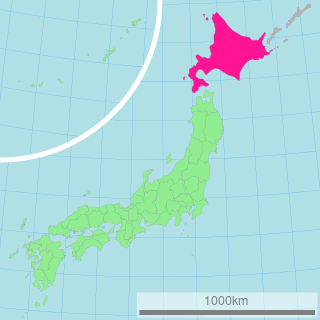
Hokkaido, formerly known as Ezo, Yezo, Yeso, or Yesso, is the second largest island of Japan, and the largest and northernmost prefecture. The Tsugaru Strait separates Hokkaido from Honshu. The two islands are connected by the undersea railway Seikan Tunnel. The largest city on Hokkaido is its capital, Sapporo, which is also its only ordinance-designated city. About 43 km north of Hokkaido lies Sakhalin Island, Russia. To its east and north-east are the disputed Kuril Islands.
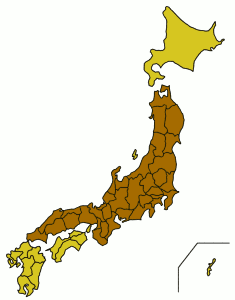
Honshu is the largest and most populous island of Japan, located south of Hokkaido across the Tsugaru Strait, north of Shikoku across the Inland Sea, and northeast of Kyushu across the Kanmon Straits. The island separates the Sea of Japan, which lies to its north and west, from the North Pacific Ocean to its south and east. It is the seventh-largest island in the world, and the second-most populous after the Indonesian island of Java.
A prefecture is an administrative jurisdiction or subdivision in any of various countries and within some international church structures, and in antiquity a Roman district governed by an appointed prefect.
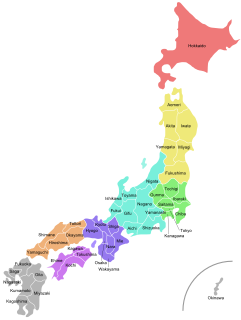
Japan is divided into 47 prefectures, forming the first level of jurisdiction and administrative division. They consist of 43 prefectures proper, two urban prefectures, one "circuit" or "territory" and one "metropolis". The Meiji Fuhanken sanchisei administration created the first prefectures from 1868 to replace the urban and rural administrators in the parts of the country previously controlled directly by the shogunate and a few territories of rebels/shogunate loyalists who had not submitted to the new government such as Aizu/Wakamatsu. In 1871, all remaining feudal domains (han) were also transformed into prefectures, so that prefectures subdivided the whole country. In several waves of territorial consolidation, today's 47 prefectures were formed by the turn of the century. In many instances, these are contiguous with the ancient ritsuryō provinces of Japan.
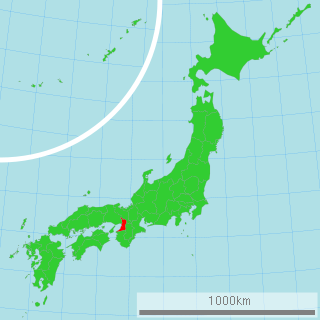
Osaka Prefecture is a prefecture located in the Kansai region on Honshu, the main island of Japan. The capital is the city of Osaka. It is the center of Osaka-Kobe-Kyoto area. Osaka is one of the two "urban prefectures" of Japan, Kyoto being the other.
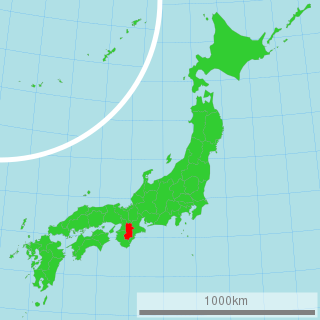
Nara Prefecture is a prefecture in the Kansai region of Japan. The capital is the city of Nara. Nara Prefecture has the distinction of having more UNESCO World Heritage Listings than any other prefecture.

Chiba Prefecture is a prefecture of Japan located in the Kantō region, and the Greater Tokyo Area. The sixth most populous prefecture, and 27th largest by land area, Chiba is on the east coast of Honshu and largely consists of the Bōsō Peninsula, which encloses the eastern side of Tokyo Bay. Its capital is the city of Chiba.

Saitama Prefecture is a prefecture of Japan located in the Kantō region. The capital is the city of Saitama.
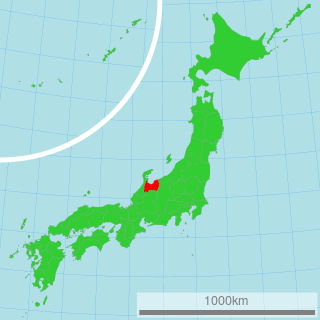
Toyama Prefecture is a prefecture of Japan located in the Chūbu region of Honshu. Toyama Prefecture has a population of 1,053,555 (2018) and has a geographic area of 4,247 km2. Toyama Prefecture borders Ishikawa Prefecture to the west, Gifu Prefecture to the south, Nagano Prefecture to the east, and Niigata Prefecture to the northeast.
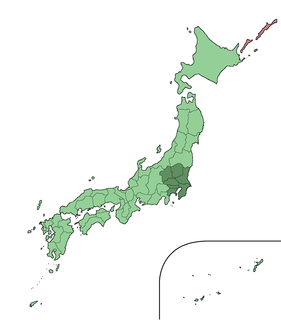
The Kantō region is a geographical area of Honshu, the largest island of Japan. The region includes the Greater Tokyo Area and encompasses seven prefectures: Gunma, Tochigi, Ibaraki, Saitama, Tokyo, Chiba, and Kanagawa. Within its boundaries, slightly more than 45 percent of the land area is the Kantō Plain. The rest consists of the hills and mountains that form the land borders. According to the official census on October 1, 2010 by the Japan Statistics Bureau, the population was 42,607,376, amounting to approximately one third of the total population of Japan.
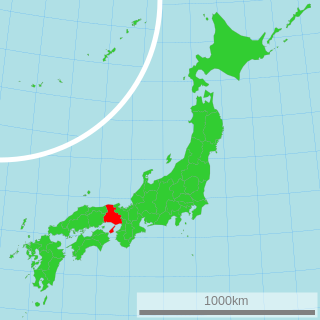
Hyōgo Prefecture is a prefecture of Japan located in the Kansai region on Honshu island. The capital of Hyogo is Kobe.

A prefectural-level municipality, prefectural-level city or prefectural city; formerly known as province-administrated city from 1949 to 1983, is an administrative division of the People's Republic of China (PRC), ranking below a province and above a county in China's administrative structure. Prefectural level cities form the second level of the administrative structure. Administrative chiefs (mayors) of prefectural level cities generally have the same rank as a division chief of a national ministry. Since the 1980s, most former prefectures have been renamed into prefectural level cities.

Prefectures, formally a kind of prefecture-level divisions as a term in the context of China, are used to refer to several unrelated political divisions in both ancient and modern China. There are 334 prefecture-level divisions in China. They include 7 prefectures, 293 prefecture-level cities, 30 autonomous prefectures and 3 leagues. Other than provincial level divisions, prefectural level divisions are not mentioned in the Chinese constitution.
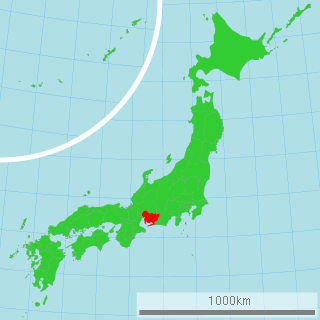
Aichi Prefecture is a prefecture of Japan located in the Chūbu region. The region of Aichi is also known as the Tōkai region. The capital is Nagoya. It is the focus of the Chūkyō metropolitan area.

The Japanese archipelago is a group of 6,852 islands that form the country of Japan. It extends over 3,000 km (1,900 mi) from the Sea of Okhotsk northeast to the Philippine Sea south along the northeastern coast of the Eurasia continent. It consists of islands from the Sakhalin island arc, the Northeastern Japan arc to the Ryukyu islands and the Nanpō Islands.
Greek vehicle registration plates are composed of three letters and four digits per plate printed in black on a white background. The letters represent the district (prefecture) that issues the plates while the numbers range from 1000 to 9999. As of 2004 a blue strip was added on the left showing the country code of Greece (GR) in white text and the Flag of Europe in yellow. Similar plates but of square size with numbers ranging from 1 to 999 are issued for motorcycles which exceed 50 cc in engine size.
Autonomous prefectures are one type of autonomous administrative divisions of China, existing at the prefectural level, with either ethnic minorities forming over 50% of the population or being the historic home of significant minorities. All autonomous prefectures are mostly dominated, in population, by the Han Chinese. The official name of an autonomous prefecture includes the most dominant minority in that region, sometimes two, rarely three. For example, a Kazakh prefecture may be called Kazak Zizhizhou. Like all other prefectural level divisions, autonomous prefectures are divided into county level divisions. There is one exception: Ili Kazak Autonomous Prefecture contains two prefectures of its own. Under the Constitution of the People's Republic of China, autonomous prefectures cannot be abolished.

In Morocco, the 75 second-level administrative subdivisions are 13 prefectures and 62 provinces. They are subdivisions of the 12 regions of Morocco. Each prefecture or province is subdivided into arrondissements, municipalities or urban municipalities in other urban areas, and districts in rural areas. The districts are subdivided into rural municipalities. One prefecture (Casablanca) is also subdivided into préfectures d'arrondissements, similar to districts (cercles) except they are grouping a few arrondissements instead of rural municipalities.